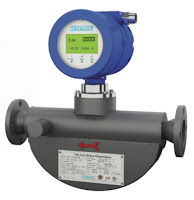Supply pressure effect (SPE) is the phenomena related to the change of outlet pressure corresponding to a change of inlet, also referred to as supply pressure. This effect is usually described as a given outlet pressure rise per 100 psi decrease in supply pressure. If a regulator has a SPE of 1 psi per 100 psi decrease in supply pressure, it would mean that for every 100 psi drop in inlet pressure, the outlet pressure would rise by 1 psi. This increase can be significant during the consumption of a high pressure cylinder. If, for example, a full cylinder’s pressure was 2,200 psi and it was considered empty at 200 psi, the outlet pressure of the regulator would rise by a total of 20 psi from a full to empty cylinder. The calculation would be 2,200 – 200 = 2,000; 2,000/100 = 20; 20 x 1 psi = 20 psi. SPE is a relatively constant value over the rated inlet pressure range of a pressure regulator. It is related to a ratio of the effective working areas of the diaphragm and poppet sealing area to the seat. Thus defined, it should be noted that SPE varies significantly based upon a regulator’s design characteristics. The AP Tech product line has pressure regulators with a SPE that ranges from as little as 0.05 psi to as much as 5.4 psi per 100 psi change in supply pressure.

SPE is caused by the change in forces due to the varying inlet pressure. A diaphragm type pressure regulator, typical of that employed in specialty gas delivery, is basically a balancing act of forces. The attached sketch graphically depicts the sum of forces that enable a pressure regulator to function. The adjustment spring applies force ‘A’ downward upon the diaphragm while force ‘B’ generated by the outlet pressure (pressure times area = force) pushes upward upon the diaphragm. In addition to force ‘B’, the poppet itself exerts an upward force because it has a surface area, albeit relatively small, exposed to the supply pressure. As shown in the diagram, force ‘A’ is equaled by the sum of ‘B’ and ‘C’. If the supply pressure decreases, the amount of force contributed by ‘C’ also decreases. Force ‘B’ must correspondingly increase to maintain the equilibrium balance of forces which in turn translates to an outlet pressure rise.
Reprinted with permission from AP Tech/Advanced Pressure Technology Product Note, PN 403, Revision 1 "Supply Pressure Effect (also known as Delivery Pressure Rise)", March 5, 2013


